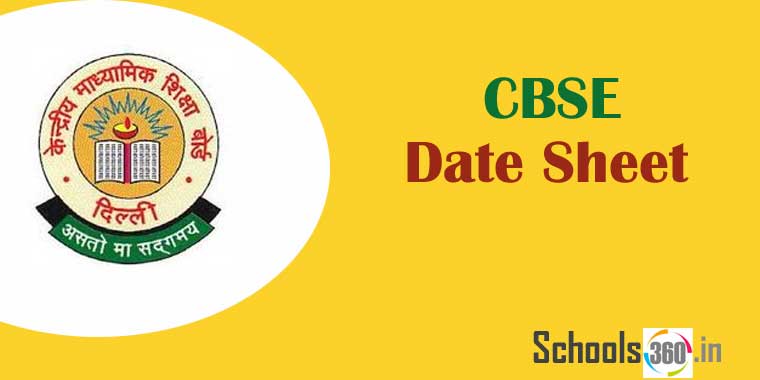The CBSE Class 6 Syllabus for Science is based on the NCERT books for Class 6. This is one of the main reasons why NCERT books are a perfect study material for CBSE syllabus. Students of Class 6 will have a single book for Science. The book will have a combination of the chapters from each section – Physics, Biology, and Chemistry. There will be a total of 16 chapters. Each chapter will have practice questions of various types based on the trending exam pattern of the CBSE Syllabus For Class 6 Science.
CBSE Class 6 Science Syllabus
Now, that you know the chapters covered in the CBSE Syllabus for Class 6 Science, we have provide a brief overview about the chapter-wise topics and sub-topics covered in CBSE Syllabus for Class 6 Science below:
The chapter-wise topics and sub-topics covered in CBSE syllabus for Class 6 Science are as under:
Chapter 1: Food: Where Does It Come From?
| Section Name | Topic Name |
| 1 | Food: Where Does it Come From? |
| 1.1 | Food Variety |
| 1.2 | Food Materials and Sources |
| 1.3 | Plant Parts and Animal Products as Food |
| 1.4 | Plant parts as food |
| 1.5 | What do Animals Eat? |
Chapter 2: Components of Food
| Section Name | Topic Name |
| 2 | Components of Food |
| 2.1 | What do Different Food Items Contain? |
| 2.2 | What do Various Nutrients do For Our Body? |
| 2.3 | Balanced Diet |
| 2.4 | Deficiency Diseases |
Chapter 3: Fibre to Fabric
| Section Name | Topic Name |
| 3 | Fibre to Fabric |
| 3.1 | Variety in Fabrics |
| 3.2 | Fibre |
| 3.3 | Some Plant Fibres |
| 3.4 | Spinning Cotton Yarn |
| 3.5 | Yarn to Fabric |
| 3.6 | History of clothing material |
Chapter 4: Sorting Materials and Groups
| Section Name | Topic Name |
| 4 | Sorting materials into groups |
| 4.1 | Objects around us |
| 4.2 | Properties of materials |
Chapter 5: Separation of Substances
| Section Name | Topic Name |
| 5 | Separation of substances |
| 5.1 | Methods of separation |
Chapter 6: Changes Around Us
| Section Name | Topic Name |
| 6 | Changes Around us |
| 6.1 | Can all changes always be reversed? |
| 6.2 | Could there be other ways to bring a change? |
Chapter 7: Getting to Know Plants
| Section Name | Topic Name |
| 7 | Getting to Know Plants |
| 7.1 | Herbs, Shrubs and Trees |
| 7.2 | Stem |
| 7.3 | Leaf |
| 7.4 | Root |
| 7.5 | Flower |
Chapter 8: Body Movement
| Section Name | Topic Name |
| 8 | Body Movements |
| 8.1 | Human Body and Its Movements |
| 8.2 | Gait of Animals |
Chapter 9: The Living Organisms and Their Surroundings
| Section Name | Topic Name |
| 9 | The Living Organisms Characteristics and Habitats |
| 9.1 | Organisms and The Surroundings Where They Live |
| 9.2 | Habitat and adaption |
| 9.3 | A journey through different habitats |
| 9.4 | Characteristics of organisms |
Chapter 10: Motion and Measurement of Distances
| Section Name | Topic Name |
| 10 | Motion and Measurement of Distances |
| 10.1 | Story of transport |
| 10.2 | How wide is this desk? |
| 10.3 | Some measurements |
| 10.4 | Standard Units of Measurements |
| 10.5 | Correct Measurement of Length |
| 10.6 | Measuring the length of a curved line |
| 10.7 | Moving things around us |
| 10.8 | Types of motion |
Chapter 11: Light, Shadows and Reflections
| Section Name | Topic Name |
| 11 | Light, Shadows and Reflections |
| 11.1 | Transparent, opaque and translucent objects |
| 11.2 | What exactly are shadows? |
| 11.3 | A pinhole camera |
| 11.4 | Mirrors and reflections |
Chapter 12: Electricity and Circuits
| Section Name | Topic Name |
| 12 | Electricity and Circuits |
| 12.1 | Electric cell |
| 12.2 | A bulb connected to an electric cell |
| 12.3 | An electric circuit |
| 12.4 | Electric switch |
| 12.5 | Electric conductors and insulators |
Chapter 13: Fun with Magnets
| Section Name | Topic Name |
| 13 | Fun with Magnets |
| 13.1 | Magnetic and non-magnetic materials |
| 13.2 | Poles of magnet |
| 13.3 | Finding directions |
| 13.4 | Make your own magnet |
| 13.5 | Attraction and repulsion between magnets |
Chapter 14: Water
| Section Name | Topic Name |
| 14 | Water |
| 14.1 | How much water do we use? |
| 14.2 | Where do we get water from? |
| 14.3 | Water cycle |
| 14.4 | Back to the oceans |
| 14.5 | What if it rains heavily? |
| 14.6 | What happens w it does not rain for a long period? |
| 14.7 | How can we conserve water? |
| 14.8 | Rainwater harvesting |
| 14.9 | Summary |
Chapter 15: Air Around Us
| Section Name | Topic Name |
| 15 | Air Around us |
| 15.1 | Is air present everywhere around us? |
| 15.2 | What is air made up of? |
| 15.3 | How does oxygen become available to animals and plants living in water and sons? |
| 15.4 | How is the oxygen in the atmosphere replaced? |
| 15.5 | Summary |
Chapter 16: Garbage In, Garbage Out
| Section Name | Topic Name |
| 16 | Garbage in, Garbage out |
| 16.1 | Dealing with Garbage |
| 16.2 | Vermicomposting |
| 16.3 | Think and Throw |
| 16.4 | Recycling of Paper |
| 16.5 | Plastics boon or a curse? |
| 16.6 | Summary |








